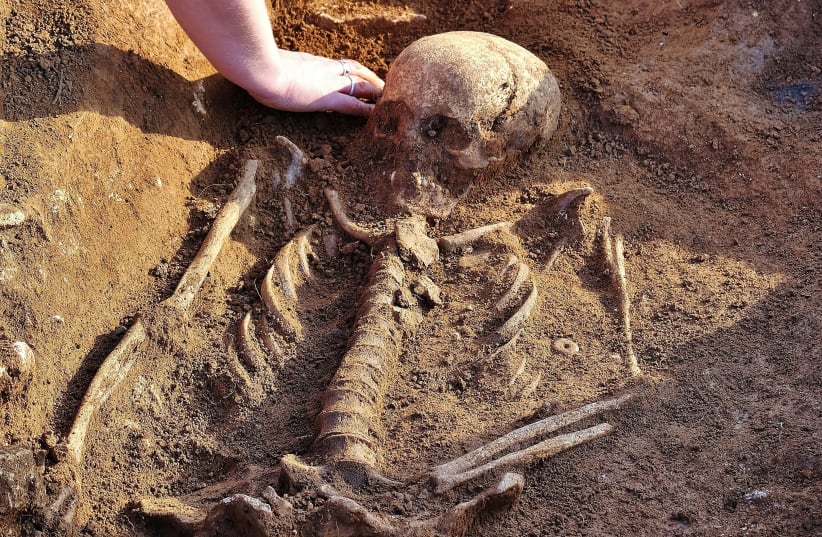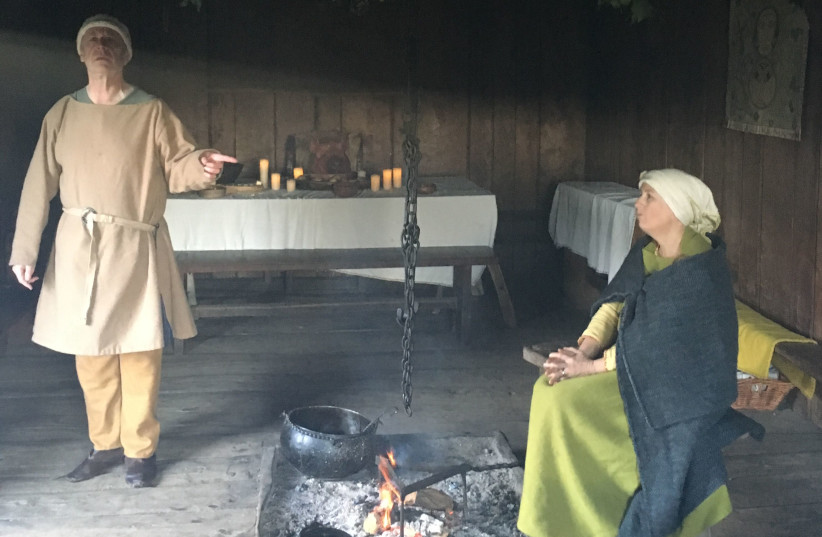Early Anglo-Saxon kings may not have been such big meat eaters as previously thought; rather, they subsisted more on a daily plant-based diet before the Vikings came to their shores, a new study suggests.
Much like Israelis who will be grilling copious amounts of meat this week as they mark Independence Day at gatherings of family and friends, the elites were occasionally treated to lavish feasts of grilled meat by free peasants, said researchers in a report published recently by Cambridge University Press.
University of Edinburgh bioarchaeologist Dr. Sam Leggett and Sidney Sussex College historian Tom Lambert said their study overturned major assumptions about early medieval English history, which has always maintained that royals and nobles ate far more meat than the rest of the population – men more so than women – and that free peasants were forced to hand over food to sustain their rulers throughout the year in an exploitative system known as feorm, or food rent.
The two joined forces after Lambert became intrigued by a presentation given by Leggett as a doctoral student at the University of Cambridge on her bioarchaeological research, which revealed no correlation between social status and high-protein diets.
After chemically analyzing isotopes preserved in the bones of 2,023 people buried in England from the fifth to 11th centuries to determine their diets, Leggett cross-referenced the results with evidence from their burial that could identify social status, such as grave goods, body position and grave orientation.
Isotopes are variants of chemical elements present in plant and animal food sources that are deposited on the human skeleton when they are ingested. These isotopes provide indicators about people’s diets.
Paintings of gluttonous carnivorous medieval feasts come from much later in the Middle Ages, around the 15th century, when people even thought vegetables were a bad thing, Leggett said.
“The idea of a big fat king is from much later; it is not what we are seeing in the early medieval period,” she said.
Leggett’s findings surprised Lambert because so many medieval texts and historical studies suggest that Anglo-Saxon elites ate large quantities of meat.
The researchers began by deciphering a food list compiled during the reign of King Ine of Wessex (688-726 CE) to estimate how much food it records and what its calorie content might have been.
According to a press release, they estimated that the supplies amounted to 1.24 million kcal (kilocalories, or calories), over half of which came from animal protein. The list included 300 bread rolls, so the researchers worked on the basis that one bun was served to each diner to calculate overall portions. Each guest would have received 4,140 kcal from 500 grams of mutton; 500 gr. of beef; another 500 gr. of salmon, eel and poultry; plus cheese, honey and ale.
The researchers studied 10 other comparable food lists from southern England and discovered a remarkably similar diet pattern: a modest amount of bread, a huge amount of meat, a decent but not excessive quantity of ale and no mention of vegetables, although they believed some probably were served.
“The rest of the time people were mostly eating stews of vegetables with grains, maybe some butter,” Leggett said. “But butter for their bread was rare and probably quite seasonable as well.”
The scale and proportions of the food lists strongly suggests that these were provisions for occasionally feasts, rather than general daily food supplies for royal households, Lambert said in the press release.
“I’ve been to plenty of barbecues where friends have cooked ludicrous amounts of meat, so we shouldn’t be too surprised,” he said. “The guests probably ate the best bits, and then leftovers might have been stewed up for later.”
Leggett said people ate more seasonably, relying more on plant-based food for their daily diet and reserving meat, butter and eggs for special occasions.
“Animals were quite special and had a special significance in society,” she said. “Sometimes they were food, but the rest of the time they had a role in society, pulling plows and giving milk. You invested money into having an animal and did not want to kill them so easily.
“The relationship with food was different. There is a difference between popping into the supermarket [to buy meat] and killing your ox, which you have had since it was a calf.”
Despite attempting to find some evidence of wealthy people eating differently, with more meat in their diet, their research found no such evidence, Leggett said.
These occasional feasts also suggest that society at that time was not as hierarchal as in later periods, and everyone came together for the communal events, which would have also been a crucial form of political engagement for kings and royals who traveled to attend them, she said.
For scholars of British history, this rethinking could also have far-reaching implications for medieval studies and English political history more generally, according to the press release.
“Food renders have informed theories about the beginnings of English kingship and land-based patronage politics and are central to ongoing debates about what led to the subjection of England’s once-free peasantry,” the press release said.
With the arrival of Scandinavians on British shores around the year 1000 CE, diets began to shift toward eating fish, which then led to a more meat-based diet, Leggett said. This also would have had an impact on health and life expectancy, which will be the next stage of their research, she said.

